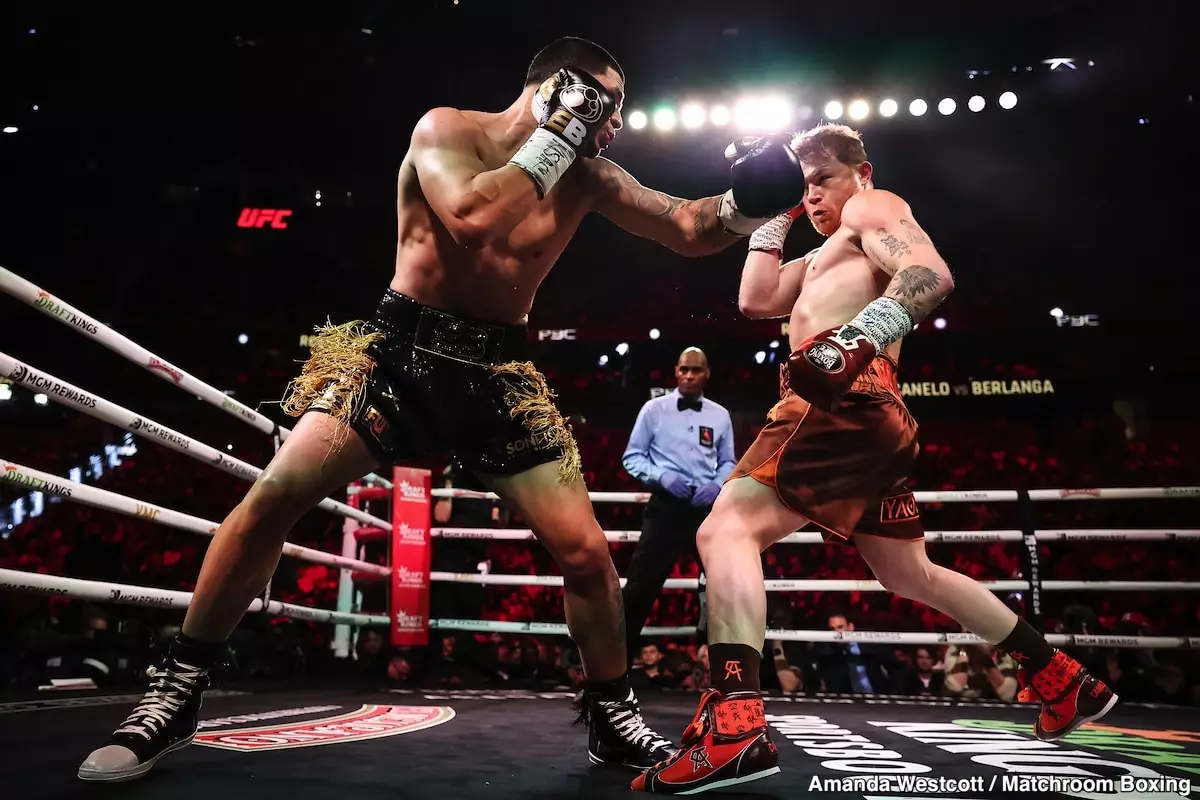The recent bout between Edgar Berlanga and Canelo Alvarez has sparked discussions not only about competitive fairness but also about the stark weight disparity displayed during the fight. Berlanga, stepping into the ring at a reported 193 pounds after an intense rehydration process, presented a stark contrast to his official weigh-in of 167.6 pounds. This substantial weight gain of over 25 pounds in just one day raises important questions surrounding the regulation of weight classes in boxing.
This situation is a glaring illustration of how the rehydration process can influence the dynamics of a fight. Berlanga’s size advantage was not just numerical; it was visually apparent, leading many spectators to believe the fighters were from different weight classes altogether. As the bout unfolded, it became clear that while Berlanga’s physicality may have given him a short-term advantage, it ultimately did not translate into competitive success against the seasoned champion Alvarez.
The boxing community needs to confront the issue of rehydration weights. Fighters often rehydrate significantly following their weigh-ins, and Berlanga’s case exemplifies this troubling trend. Typically, boxers are bound by weight classes—super middleweight being capped at 168 pounds. It becomes problematic when fighters like Berlanga rehydrate into the light heavyweight range of 175 pounds.
Had boxing organizations strictly enforced regulations regarding rehydration limits, situations like this could potentially be avoided. There is a palpable danger for opponents when a competitor enters the ring having gained such an extreme amount of weight. More stringent guidelines could ensure a fairer playing field that prioritizes the health and safety of all athletes involved.
Another significant consequence of this disparity is the emergence of ‘weight bullies’ in boxing, a term that refers to fighters who compete below their natural weight class to exploit size differences against smaller opponents. Berlanga’s rehydration tactics place him in that category. While some fighters can manage quick weight loss and gain without detrimental effects, many are left at a substantial disadvantage.
Berlanga’s success has, in part, relied on a promotional strategy that emphasizes his Puerto Rican heritage and appeals to fans. However, this can create an environment where his past achievements overshadow the fact that he may be better suited for a higher weight class. Without significant adjustments or different training approaches, fighters who engage in these tactics could find themselves struggling against more competent opponents at their natural weight.
The controversy surrounding Edgar Berlanga’s recent fight highlights a pressing issue within boxing that necessitates reform. As athletes continue to push physical limits, governing bodies must adapt to ensure safety and fairness in the sport. Advocating for weight class integrity and implementing rehydration protocols could foster a more equitable competition and preserve the health of fighters—ultimately enriching the sport’s integrity and appeal. The hopeful future of boxing lies in prioritizing athletes’ wellbeing while maintaining the thrilling competition that fans love.

